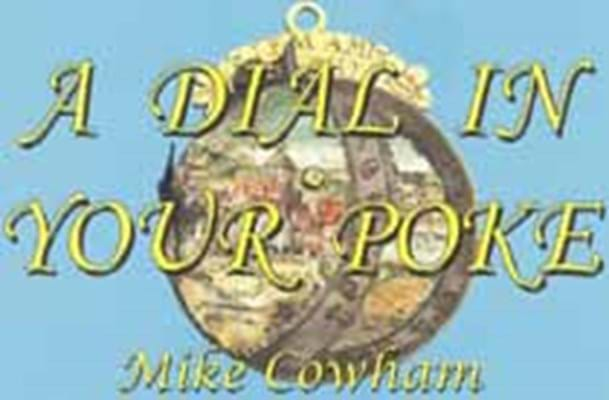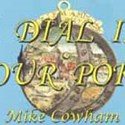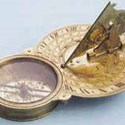Cheques in Sterling only and drawn on a UK bank, should be made payable to Mike Cowham and sent to: PO Box 970, Haslingfield, Cambridge CB3 7FL
AS an initial comment in his book, Mike Cowham offers us Shakespeare's bleary view of time-telling, as revealed in lines spoken by Jaques in As You Like It (Act II, Scene 7):
And then he drew a dial from his poke,
And, looking on it with lack-lustre eye,
Says very wisely "It is ten o'clock…
During the Bard's life (1564-1616) pocket watches that were driven by a spring and regulated by a balance wheel and escapement were almost unknown. They had to wait a further 25 years to be introduced on a limited commercial scale.
Even then, they were expensive and often unreliable, although large mechanical clocks, such as those installed in church turrets, had been in existence since the late 14th century.
In the meantime, gentlemen travellers and others used a small portable sundial, that, yes, fitted into your pocket. They worked well enough, when orientated north and south using the small compass fitted within.
The drawback was that the sun had to be shining. Like their larger counterparts in the garden, or the vertical dials often found on the south side of a church turret (to act as a check on the clock), in cloudy or wintry weather all these devices were totally useless.
The author is one of the leading experts in the arcane field of these little instruments. As he explains in the introduction, he was an industrial engineer who built up a business and then sold it and devoted his time to researching these sundials.
The 24 chapters begin with the first portable dials and continue through ring, altitude, diptych, equinoctial, the Butterfield types, inclining types, analemmatic types, magnetic compass types, string gnomon types …and so on.
But do not be put off by these scientific descriptions. The author uses good plain English to explain how each example works, backed up by two or three colour photographs on each page.
Examples shown are made from ivory, brass, boxwood and even rock crystal. An illustration of how exactly to use a Nocturnal, an early instrument for indicating time at night, is useful.
Later chapters cover reproduction and modern dials, including "Bombay copies", but Cowham fails to point out that the 'signatures' on these are integrally cast as cire perdue (lost wax), and not hand engraved, as the originals were.
Nor is there any mention of the fake dials made these days from old billiard-balls. A few illustrations of these would have been useful, since they are seen in many street markets, from Portobello Road to Paris and Rome, and even in classier shops in such places.
But all the information in the book is good, and there is a wealth of it. Appendix 1 compares the numerals, letters and sigils used by Europeans and Arabians from Gothic to recent times. Having digested the chapter on Perpetual Calendars, Appendix 2 gives all the Saints names in English and German for each day of the year.
The next chapter gives detailed advice on how to care for all such objects, what cleaning agents to use - and what not to do. His remarks about using his wife's hair-dryer to remove latent moisture from tiny screws gives an interesting image. He admits: put them into a small plastic container first, and don't hold the dryer too close. Set it to low heat and low blow.
My only criticism is that no dimensions are given for the objects in the photographs, but given the subject, readers can guess that most of the items illustrated can be held comfortably within the palm of their hand.
I am told that a second edition, if called for, will include measurements.
Holding time in the palm of your hand
A Dial in your Poke by Mike Cowham, published privately. £29.50, plus p&p: UK £4.50, Europe £5.50, rest of the world including USA £10.00.








